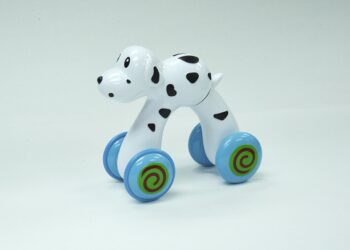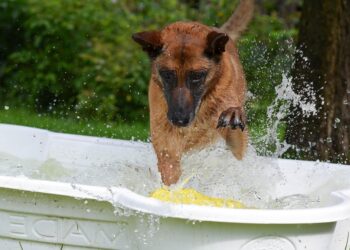[ad_1]
Chew on This: The Ultimate Guide to Puppy Teething Toys
Puppies are adorable creatures that bring joy and happiness into our lives. However, one of the challenges that come with owning a puppy is dealing with their teething phase. Just like human babies, puppies go through a teething stage where they feel the urge to chew on everything in sight. This is a natural behavior that helps them relieve the discomfort of their growing teeth.
Understanding Puppy Teething
Puppy teething usually starts around 3-4 months of age and can last up to 6 months. During this time, puppies will chew on anything they can get their paws on, including shoes, furniture, and even your fingers. It’s important to provide them with appropriate teething toys to redirect their chewing behavior and prevent them from damaging your belongings.
Choosing the Right Teething Toys
When selecting teething toys for your puppy, it’s important to consider a few key factors. The toy should be safe, durable, and appropriate for your puppy’s size and breed. Look for toys made of non-toxic materials that are designed specifically for teething puppies. Avoid toys that are too small or easily breakable, as they can pose a choking hazard.
Types of Teething Toys
There are several types of teething toys available on the market, each designed to meet different needs and preferences. Some popular options include:
- Rubber Chew Toys: These toys are durable and can withstand heavy chewing. They are great for puppies who love to gnaw on things.
- Plush Toys: Soft and cuddly, plush toys are perfect for puppies who prefer a gentler chewing experience.
- Rope Toys: Rope toys are great for puppies who love to tug and pull. They can also help with dental health by removing plaque and tartar from your puppy’s teeth.
- Freezeable Toys: These toys can be filled with water and frozen to provide soothing relief to your puppy’s sore gums.
Tips for Using Teething Toys
Here are some tips for making the most out of your puppy’s teething toys:
- Rotate Toys: Keep your puppy interested by rotating their toys regularly. This will prevent them from getting bored and help prolong the life of the toys.
- Supervise Playtime: Always supervise your puppy when they are playing with their teething toys. This will help prevent accidents and ensure their safety.
- Teach Proper Chewing: If your puppy starts chewing on something they shouldn’t, redirect their attention to their teething toys. Reward them for chewing on the right things to reinforce good behavior.
Common Questions About Puppy Teething Toys
Here are some common questions that dog owners have about puppy teething toys:
1. When should I start using teething toys for my puppy?
You can start introducing teething toys to your puppy as soon as they start showing signs of teething, usually around 3-4 months of age.
2. How many teething toys should I get for my puppy?
It’s a good idea to have a variety of teething toys on hand to keep your puppy entertained and engaged. Start with 2-3 different toys and see which ones your puppy prefers.
3. How do I clean teething toys?
Most teething toys can be cleaned with warm, soapy water and rinsed thoroughly. Make sure to dry the toys completely before giving them back to your puppy.
Conclusion
Puppy teething can be a challenging time for both you and your furry friend, but with the right teething toys, you can help make the process more manageable. By choosing safe and durable toys that are appropriate for your puppy’s age and breed, you can redirect their chewing behavior and protect your belongings. Remember to supervise playtime, teach proper chewing habits, and rotate toys regularly to keep your puppy engaged and entertained. With the tips and information provided in this guide, you can ensure that your puppy’s teething phase is a smooth and enjoyable experience for both of you.
[ad_2]














































